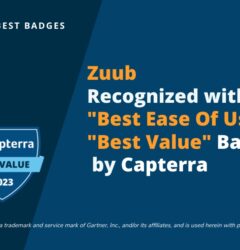01 Aug

With “RCM automation” tools popping up everywhere, it’s easier to ignore the buzz than try to figure out what all these companies actually do. So how should we be looking at these tools?
Automation is a great word – it means my team doesn’t do a particular task anymore, right?
But does it mean that technology is doing it instead? Or does it mean the partner company has their own people in the background “automating” tasks? The best way to find out is to ask.
If a people team, why did they go that route? What processes are in place for training and accountability? What does communication look like between this external team and mine? External people teams often have the same challenges internal people teams do. If a technology, what’s so special about this technology that didn’t exist before? Can they explain how it works in layman’s terms? Why is it different than the thing I tried last year, before finding out that the technology wasn’t ready, and then cut to bring the process back in-house?
The truth is, no one does “everything,” and no one trying to do everything does everything well. If someone is trying to convince you they’ve got a “solve all,” it’s probably a good idea to run, not walk.
To understand what is meant by automation, ask specific questions about how the automation runs and do a “day in the life” walk through before buying into the buzz.
What about “RCM?”
Calling something an “RCM” technology sounds cool. But are you telling me you collect patient balances, are you telling me you help with claim management, insurance verifications, what? In almost a blink of an eye, software companies have popped up everywhere compartmentalizing revenue cycle management tasks and overlapping parts of each other without doing the whole thing. If we’re not careful, the RCM space is going to become as commoditized as the PCOMM space in dental. *GASP.
When speaking with a potential RCM partner, the first thing to look out for is what you’re being promised. The truth is, no one does “everything,” and no one trying to do everything does everything well. If someone is trying to convince you they’ve got a “solve all,” it’s probably a good idea to run, not walk. Though it would be ideal to have an all in one, start to finish rev cycle solution, most dental folks are realistic and understand that’s not the state of dental technology today. We have a ways to go as an industry with innovation and collaboration before that’s possible.
So what can be done?
- Take a look at the RCM landscape at your organization. Is there a clear big picture of how processes move from case acceptance to treatment complete to billing (and what to do with aging)? Is that picture shared cross organizationally? If so, where are things going really well? Where are teams struggling? Are there areas it could be interesting to introduce technology in order to further support teams? Would it make sense to consider offloading certain tasks to reallocate time and resources toward patient outcomes and revenue generating activities? Once you’ve honed in on an area with room for improvement, start vetting out RCM partners who specifically use language around what you’re trying to solve. Talk to a lot of them.
- Get behind the broad brush language. When in a conversation with a potential RCM partner, can you see the product? Is it tangible or just an idea and you’re the guinea pig? Are you feeding them what you want to hear and getting a lot of open promises back? Or, are they able to communicate their current state in a way that you feel confident they understand your current state and what you’d like to solve? Is there anyone referenceable who’s been happy on the product for at least a little while? Know anyone personally who’s tried it?
When having a conversation with a potential RCM partner, ask yourself, “What are they bragging about?” “What did one guy or gal mention that the other didn’t?” Then ask both of them about the other’s thing and see how they respond. “Why did you build it this way instead of that way?” “What do prospective clients wish you did that you don’t?” “Tell me about onboarding. No, really, tell me about onboarding.”
I’m not saying it’s easy. It can be overwhelming, monotonous, and messy to vet out tech solutions in general. That brings us to #3.
- What you want to focus on is finding out who has built something that meets your current need really well today, has intention to anticipate what you’ll need next, and can communicate a path to get there that’s worth investing your time and resources with for the long haul.
Picking an RCM partner shouldn’t feel like deciding which PCOMM vendor you should look at this week. Get to the bottom of what is driving the company and whether or not you could align with them for the long term. What you want to look for is innovative, reliable, long term partners who are solving something meaningful today and have a forward outlook for tomorrow. If they aren’t thinking big picture with you, they’re bound to be one of too many solutions you’ll have to implement over time to tackle this one really big word: RCM Automation.
If you’d like to give your new vetting skills a try, use this link to meet with Zuub:
An RCM automation tool designed to support existing teams and processes exclusively using technology. Our long term goal is to support each stage of revenue cycle with technology. We don’t have all of the bases covered today. I’ll tell you where we started, where we’re at, and what comes next.
About Author

Devan Gillespie been in the dental industry on the solutions/partner side for four years specializing in SaaS solutions. She is currently focusing on technology supporting revenue cycle management and enjoys seeing the client’s needs holistically through the lens of their intended goals and outcomes in order to best provide solutions. Innovation in dentistry is what she’s most excited about in her professional life. In her free time, she enjoys traveling the country in a travel trailer with her husband and two doodles.
Recent Posts
Join Thousands Of Happy Providers
Start maximizing your revenue today!
26%
Average increase in practice ‘s productivity
- Increase case acceptance
- 350+ payer integrations
- Collect more, faster
- Reduce A/R costs
- Full automation
- Live customer support
Ready to get started?
Your online account setup only takes minutes. If you have questions, contact us at (213) 645-2813

Support Hours:
6 AM to 5PM (PST)









